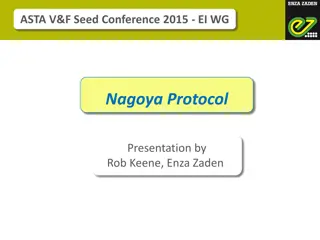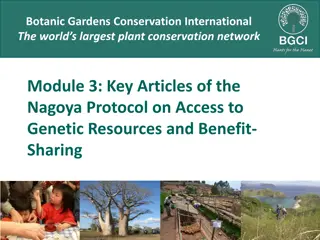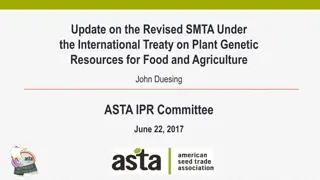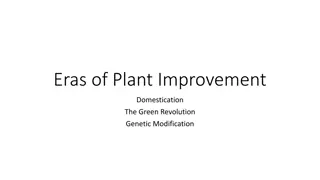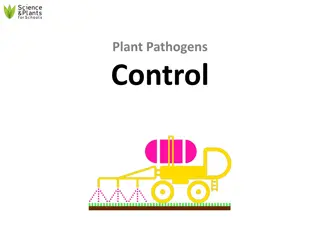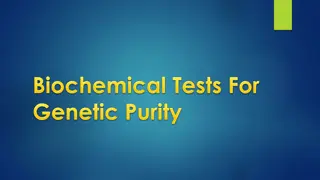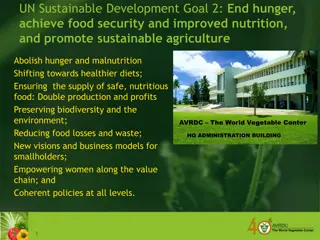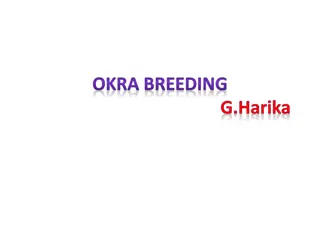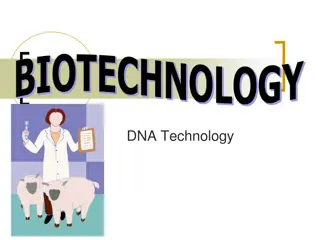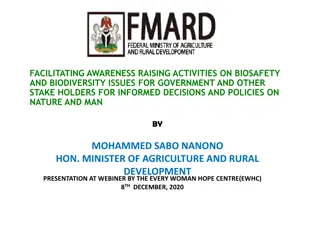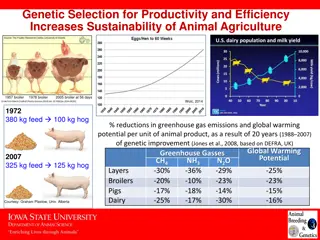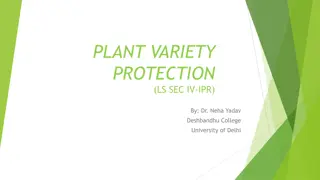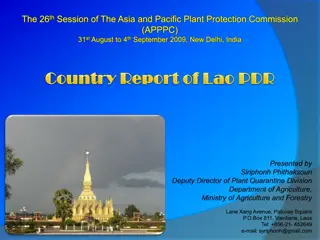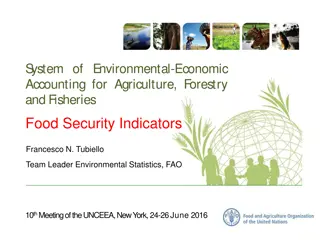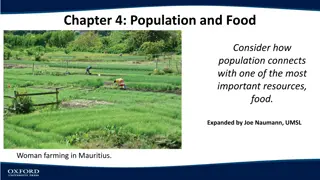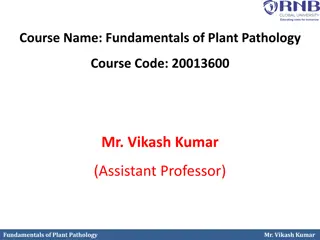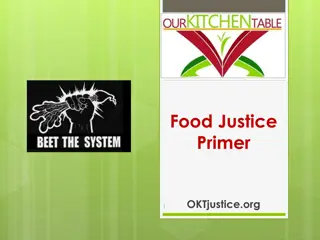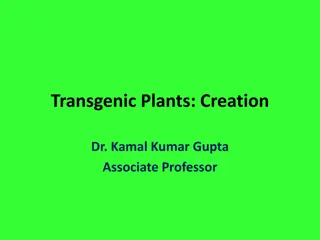Implementing DOIs for Plant Genetic Resources for Food and Agriculture (PGRFA)
The article discusses the implementation of Digital Object Identifiers (DOIs) for Plant Genetic Resources for Food and Agriculture (PGRFA) to facilitate knowledge exchange and aggregation. It highlights the key issues, challenges, and the role of Global Information System (GLIS) in managing PGRFA data efficiently.
Download Presentation

Please find below an Image/Link to download the presentation.
The content on the website is provided AS IS for your information and personal use only. It may not be sold, licensed, or shared on other websites without obtaining consent from the author. Download presentation by click this link. If you encounter any issues during the download, it is possible that the publisher has removed the file from their server.
E N D
Presentation Transcript
DOIs for PGRFA https://ssl.fao.org/glis www.fao.org/plant-treaty
Need for PID User community has been struggling for years trying to agree on a PID technology Purpose: assign PIDs to Plant Genetic Resources for Food and Agriculture (PGRFA) to facilitate aggregation and exchange of scientific knowledge Asked the Secretariat for guidance in 2015. We went through a consultative selection process resulting in the choice of DOIs Article 17 of the Treaty calls for the creation of the Global Information System (GLIS), to be based on existing systems The cost of DOI minting in GLIS is covered by the Secretariat The Secretariat of the Treaty became DataCite Member in 2017 https://ssl.fao.org/glis www.fao.org/plant-treaty
Key issues PGRFA are living organisms that change and evolve DOIs are associated to the physical object, not to its description Mistakes can be easily corrected Taxonomy changes can be accommodated DOIs are also associated to the holder of the PGRFA When the material is exchanged, the Recipient assigns a new DOI GLIS collects a minimum set of descriptors and facilitates access to information on PGRFA where it is created and maintained Google for PGRFA FAO/Bioversity MultiCrop Passport Descriptors (MCPD) are the standard for genebank collections Some GLIS-specific extensions added (e.g. MLS status, links) Mapping the 40+ GLIS descriptors to the DataCite metadata structure (4.0, now 4.3) HasMetadata used to provide access to full descriptor set (XML and DwC-A formats) GLIS maintains a graph of the relationships among PGRFA GLIS uses EventData to link to publications and datasets citing GLIS DOIs https://ssl.fao.org/glis www.fao.org/plant-treaty
GLIS detail page example https://ssl.fao.org/glis www.fao.org/plant-treaty
Relationships among PGRFAs in GLIS PGRFA (DOI) Method https://ssl.fao.org/glis www.fao.org/plant-treaty
Publication details from EventData https://ssl.fao.org/glis www.fao.org/plant-treaty
Challenges Stakeholder evangelization is difficult because of established (sub-optimal) practices Reluctant to accept that local identifiers cannot be used globally Some stakeholders prefer to go their own way Lack of coordination resulting in reduced effectiveness of DOIs assigned by others Editors and publishers are having troubles with data citation Don't like citing GLIS DOIs among bibliographic references... Unfamiliar with data citation, stuck to the traditional concept of citation https://ssl.fao.org/glis www.fao.org/plant-treaty
Thank you! Q&A marco.marsella@fao.org PGRFA-Treaty@fao.org https://ssl.fao.org/glis www.fao.org/plant-treaty



